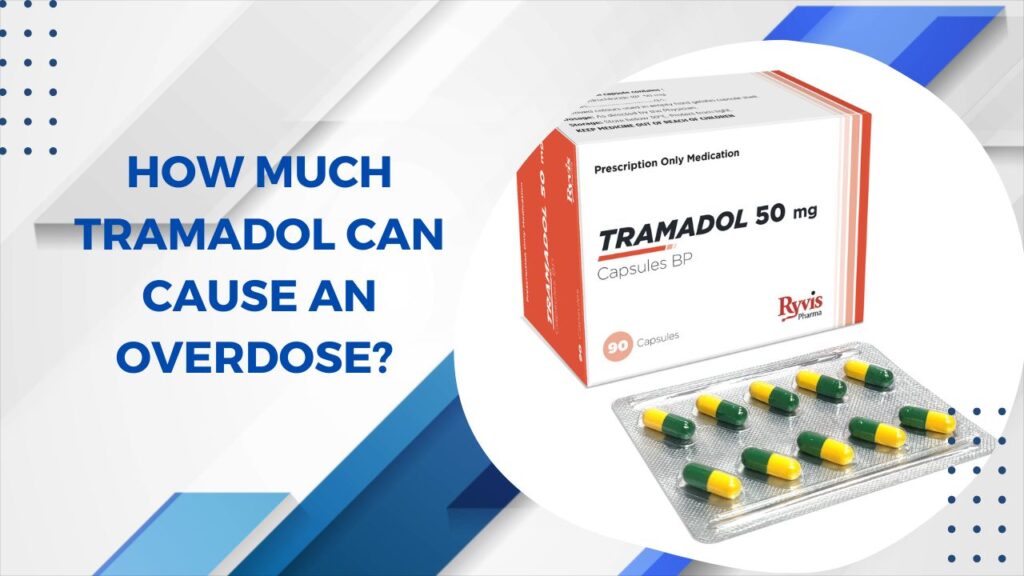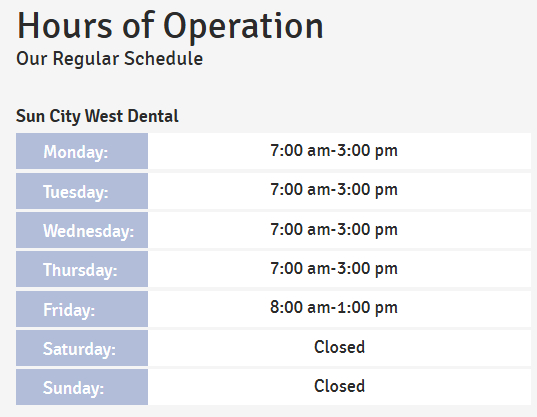Tramadol, a widely known prescription opioid, is one of the most frequently abused painkillers in the United States. Due to its widespread misuse, tramadol overdose has become a growing concern, with opioid-related deaths consistently ranking among the top causes of drug fatalities.
This synthetic opioid is prescribed to treat moderate to severe pain by altering pain perception in the brain. Tramadol doses can vary, from 50 mg immediate-release tablets to 300 mg extended-release formulations. Given this variability, overdose is a very real risk if tramadol is consumed irresponsibly.
Can You Overdose on Tramadol?
It is possible to overdose on tramadol, especially when taken in excessive amounts or combined with other central nervous system (CNS) depressants like alcohol, benzodiazepines, or other opioids. Tramadol overdoses can be fatal, so recognizing symptoms and understanding risk factors is crucial.
What Happens if You Overdose on Tramadol?
A tramadol overdose can be deadly, particularly if the drug is combined with other depressants. Tramadol works by binding to opioid receptors and increasing serotonin and norepinephrine levels in the brain. Overdosing on tramadol can lead to severe respiratory depression, seizures, and serotonin syndrome, which may be fatal.
If you feel your prescribed tramadol dose is not managing pain effectively, consult your doctor instead of increasing the dose on your own. Taking too much tramadol or combining it with other substances greatly increases the risk of overdose and death.
How Much Tramadol Does It Take to Overdose?
The amount of tramadol required for an overdose varies from person to person. Most overdoses occur when tramadol is taken in high doses or combined with other substances like alcohol or benzodiazepines. Additionally, tramadol bought illegally may be laced with stronger opioids like fentanyl, further increasing the risk of overdose.
Combining tramadol with other CNS depressants can suppress breathing and lead to a fatal overdose. The FDA has issued a Black Box Warning against combining opioids with other sedative medications due to these risks.
What Are the Symptoms of a Tramadol Overdose?
Recognizing tramadol overdose symptoms is vital for seeking prompt medical attention. These symptoms include:
- Extreme drowsiness and confusion
- Slow or shallow breathing
- Seizures
- Nausea and vomiting
- Loss of consciousness or coma
- Bluish skin or lips due to lack of oxygen
Any overdose symptom should be taken seriously. If you or someone you know exhibits these symptoms, seek emergency medical help immediately.
How Much Tramadol Is Too Much? The risk of tramadol overdose depends on individual tolerance levels. Someone new to the drug may overdose on a lower dose than a person who has been using it long-term. Additionally, combining tramadol with other CNS depressants drastically increases overdose risk regardless of the dose taken.
Why Buying Tramadol Online Increases the Risk of Addiction and Overdose
Buying Tramadol online can increase the risk of addiction and overdose due to several factors. Many online pharmacies operate without proper regulation, making it easier to obtain Tramadol without a prescription or medical supervision. This can lead to misuse, as people may take higher doses or use it more frequently than prescribed.
Tramadol is an opioid, and prolonged or excessive use can lead to dependence, where the body craves the drug to function normally. Additionally, some online sources may sell counterfeit or contaminated Tramadol, increasing the risk of harmful side effects or overdose.
Without a doctor’s guidance, individuals may also mix Tramadol with other medications or alcohol, further raising the chances of severe health complications.
How to Safely and Legally Buy Tramadol in 2025
Tramadol is a prescription pain medication approved by the FDA to treat moderate to severe pain. The safest and most legal way to get it is by first seeing a licensed doctor in person or through a trusted telehealth service.
These days, many people use platforms like Teladoc, MDLIVE, or HealthTap to talk to a doctor from the comfort of home. If the doctor decides tramadol is right for your condition, they’ll send your prescription directly to a licensed pharmacy electronically.
You can then get your tramadol from a nearby pharmacy like CVS or Walgreens or through an online pharmacy that’s officially certified—look for one approved by the NABP (National Association of Boards of Pharmacy) or with a web address ending in “.pharmacy.” Avoid any websites that offer tramadol without a prescription. These are often illegal and may sell fake or unsafe medications.
Starting in 2025, some prescription systems even use AI to check for dangerous drug interactions, so be honest about your medical history. Always follow your doctor’s instructions carefully, and never share your medication. This regulated process is designed to keep you safe and legally protected.
Tramadol Overdose Treatment
If someone accidentally or knowingly takes too much Tramadol, they need immediate medical help. Tramadol overdose can be fatal, so it should not be ignored. First, call 911 or your local emergency number.
Overdose symptoms can include: fainting, difficulty breathing, slowing of the heartbeat, confusion, vomiting, or seizures. In the hospital, doctors usually treat the patient with activated charcoal, IV fluids, and an antidote such as naloxone, especially if overdose symptoms are severe.
The most important thing is that Tramadol should always be taken under the direction of a doctor, and the dosage should be strictly followed to avoid overdose or misuse. If you accidentally take an extra dose, contact your doctor immediately – delaying can be dangerous.
If you or someone you love needs to quit drug addiction, these facilities of The Recovery Village network can be the beginning of a new life for you. These centres not only treat alcohol and drug addiction but also provide proper treatment for co-occurring mental health conditions.
Top Tramadol Overdose Treatment Centre
Orlando Recovery Centre (Florida) – Provides top-level care for both addiction and mental health. Everything from detox to therapy is available here in one place.
The Recovery Village Columbus (Ohio) – Offers inpatient, outpatient, and aftercare programs, where a personalised recovery plan is created for each patient.
(Colorado) The Recovery Village Palmer Lake – For those looking for a fresh start, this center offers both inpatient and outpatient options.
The Recovery Village Ridgefield (Washington) – Located near Portland, this centre offers outpatient and aftercare services, perfect for those ready to begin treatment.
The Recovery Village (Umatilla, Florida) – Multiple treatment levels are available specifically for Ambien addiction: inpatient, outpatient, IOP, and partial hospitalisation.
IAFF Centre of Excellence – Designed for firefighters, this centre treats their mental health and addiction challenges so they can recover quickly and return to duty.
Denver Mental Health & Counselling – This centre supports long-term mental health and recovery goals with TMS, IOP, and advanced therapy options in an outpatient setup.
The Recovery Village Palm Beach (South Florida) – Physician-led facility where same-day admission is possible, supporting every stage from detox to outpatient treatment.
(Georgia) The Recovery Village Atlanta – Situated in Roswell, this 62-bed center provides detox, residential, and outpatient care, focusing on recovery and transformation.
The Recovery Village Kansas City (Missouri) – Just 10 miles from downtown, this 80-bed facility provides evidence-based treatment with a physician-led approach.
The Recovery Village Cherry Hill at Cooper (New Jersey) – Located near Philadelphia, this rehab center offers full support from detox to teletherapy at every step of recovery.
If you or someone close to you is going through addiction, do not delay. Contact these centres immediately – recovery starts here.
FAQS About Tramadol Use
How Safe Is Tramadol?
Tramadol is commonly prescribed for pain management, with millions of prescriptions written annually. While effective, tramadol can be dangerous when taken in excessive amounts or combined with other substances. Understanding proper tramadol use—dosage, frequency, and potential risks—helps prevent overdose and dependency.
Tramadol has addictive potential and is classified as a Schedule IV controlled substance. Regular use can lead to tolerance, meaning a person may require higher doses to achieve the same pain-relieving effects, increasing the risk of dependence and overdose.
Are There Different Types of Tramadol?
Tramadol is available in different formulations, including:
- Immediate-release tablets: Typically 50 mg doses
- Extended-release tablets: 100 mg, 200 mg, and 300 mg doses for around-the-clock pain management
- Oral suspension and capsules: Varying strengths for different needs
What Is a Normal Tramadol Dose?
A normal tramadol dose depends on an individual’s medical condition and history. For example, a typical starting dose for immediate-release tramadol is 50 mg taken every 4 to 6 hours. The maximum recommended dose for adults is usually 400 mg daily, though this may be lower for elderly patients or those with medical conditions.
Is 100 mg of Tramadol a Lot? A 100 mg dose of tramadol may be high for someone new to the medication, but could be normal for someone taking an extended-release formulation. Doctors carefully tailor tramadol doses to individual needs, so it is essential not to exceed the prescribed amount.
How Often Can I Take Tramadol?
Immediate-release tramadol is usually taken every 4 to 6 hours as needed for pain. Extended-release formulations are designed for once-daily use. Taking tramadol more frequently than prescribed can increase the risk of overdose, dependence, and withdrawal symptoms. If your prescribed dose is not relieving pain effectively, speak to your doctor before making any changes.
Find the Help You or Your Loved One Needs
Tramadol overdose and addiction are serious but treatable conditions. With the right rehabilitation program, recovery is possible. The Recovery Village has helped many individuals regain control of their lives. With facilities nationwide, we can help you too. Contact us today to learn more about tramadol addiction treatment programs tailored to your situation.


